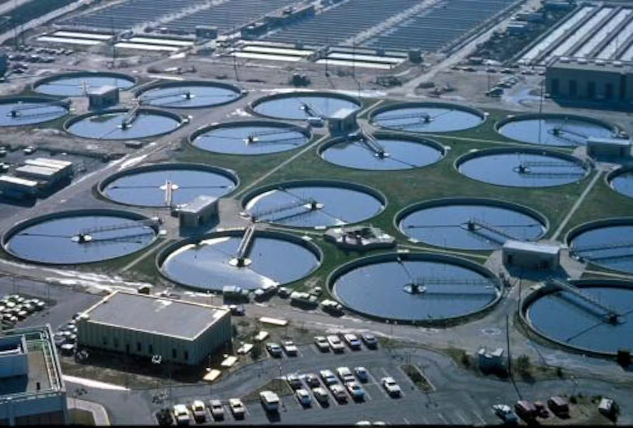
The 2016 Olympic Games in Rio highlighted the health perils of contaminated waters. AP Photo/Silvia Izquierdo
Editor’s note: The following is a roundup of archival stories.
Every year on March 22, the United Nations observes World Water Day to highlight the global water crisis. In 2017, the focus was on reducing and reusing wastewater from homes, farms, factories and other sources.
Ensuring access to water and sanitation for all people is one of the U.N.’s Sustainable Development Goals, adopted in 2015 by the United States and 192 other nations. Specifically, the goals call on member nations to
“improve water quality by reducing pollution, eliminating dumping and minimizing release of hazardous chemicals and materials, halving the proportion of untreated wastewater and substantially increasing recycling and safe reuse globally.”
Read on to learn about what it will take to meet this goal, and some potential solutions.
The scourge of sewage
Untreated sewage is a major threat to human health. According to the World Health Organization, unsafe water, poor sanitation and hygiene cause approximately 842,000 deaths each year, and 1.8 billion people use drinking water sources contaminated with feces.
Contamination in Rio de Janeiro’s harbors and marinas, which were settings for aquatic events during the 2016 Summer Olympic Games, spotlighted the serious health risks associated with exposure to sewage. According to Joan Rose, laboratory director and principal investigator in water research at Michigan State University, human waste contains a wide range of bacteria, viruses and other pathogens.
“Around the world, those who swim in and boat on or use polluted surface waters for hygienic purposes such as bathing, cleaning clothes, washing dishes or even for religious purposes are all at risk of diarrhea, respiratory disease, skin, eye, ear and nose infections,”
Rose observes.
Rose’s research group has found some of those agents in waterways around Chicago that received treated wastewater. Reducing the risk to human health will require better testing methods, more monitoring and more effective water treatment methods. These types of contamination are actually quite common, notes Tufts University’s civil and environmental engineering assistant professor Daniele Lantagne, and point to the need to develop innovative ways to treat wastewater.

Studies have found that wastewater treatment plants release nutrients and toxins into waterways. eutrophication&hypoxia/flickr, CC BY
Many people in developing countries do not have access to modern drinking water or sanitation systems. In Haiti, a major cholera outbreak occurred after a devastating earthquake in 2010. Now cholera appears to have become endemic there. Fecal contamination was the original route by which cholera spread, but now reservoirs of bacteria have become established throughout Haiti, even in uncontaminated surface water sources.
Since little has been done to improve drinking water treatment in Haiti since the earthquake, University of Florida research scientist Alex Weppelmann predicts that “mass vaccination with oral cholera vaccines might be the only intervention available” to stop cholera transmission – an effort that would require major financial and logistical support from the international community.
Social and political obstacles
Money is not the only roadblock that prevents communities from solving water-related problems. In its annual survey of U.S. mayors, the Boston University Initiative on Cities found last year that infrastructure repairs – including upgrades to wastewater and stormwater systems – were by far the largest headache for mayors from a broad swath of cities. Money for these projects is tight, but fractured relationships between federal, state and city agencies also make it hard for mayors to advance projects their cities desperately need.
In developing nations, water issues are colored by gender roles. Millions of women worldwide spend hours fetching water for drinking, cooking, bathing and other household needs. And when family members get sick from consuming tainted water, women spend hours caring for them.
“An insufficient supply of safe and accessible water poses extra risks and challenges for women and girls,”
writes Emory University postdoctoral fellow Bethany Caruso.
Innovations in treatment and reuse
Farms produce a lot of wastewater, especially runoff from irrigated fields. Excess fertilizer feeds into streams, rivers and bays, creating large blooms of algae. When the algae die and decompose, they deplete waters of oxygen, creating “dead zones” in important areas like the Gulf of Mexico and the Chesapeake Bay.
One potential solution to nutrient runoff is filtering it through bioreactors – trenches filled with wood chips, which are colonized by native bacteria from the surrounding soil. The bacteria use carbon as a food source, explains research assistant professor Laura Christianson of the University of Illinois. When nitrate-loaded water flows through the trenches, “The bacteria ‘eat’ the carbon in the wood chips,‘inhale’ the nitrate in the water, and ‘exhale’ nitrogen gas,” reducing nitrogen pollution in the water by up to 90 percent. Researchers are building and testing large bioreactors to put this strategy into practice across the Midwest.
Many communities in water-stressed areas are considering ways to reuse water after it has been appropriately treated. A 2016 study by the National Academies of Sciences, Engineering and Medicine evaluated uses for so-called graywater from bathroom sinks, showers, bathtubs, clothes washers and laundry sinks, but not from toilets or kitchens. It concluded that using graywater for purposes other than drinking, such as flushing toilets, could expand local water supplies and provide a drought-resistant year-round local water source.
“Graywater reuse for toilet flushing and other indoor uses offers the greatest opportunities for water conservation and does not reduce the amount of water available to downstream water users, as use for outdoor irrigation can,”
writes Colorado State University assistant professor Sybil Sharvelle, who served on the study panel.![]()
Jennifer Weeks, Senior Environment + Cities Editor, The Conversation
This article is republished from The Conversation under a Creative Commons license. Read the original article.
Books on The Environment from Amazon's Best Sellers list
"Silent Spring"
by Rachel Carson
This classic book is a landmark in the history of environmentalism, drawing attention to the harmful effects of pesticides and their impact on the natural world. Carson's work helped to inspire the modern environmental movement and remains relevant today, as we continue to grapple with the challenges of environmental health.
Click for more info or to order
"The Uninhabitable Earth: Life After Warming"
by David Wallace-Wells
In this book, David Wallace-Wells offers a stark warning about the devastating effects of climate change and the urgent need to address this global crisis. The book draws on scientific research and real-world examples to provide a sobering look at the future we face if we fail to take action.
Click for more info or to order
"The Hidden Life of Trees: What They Feel, How They Communicate?Discoveries from A Secret World"
by Peter Wohlleben
In this book, Peter Wohlleben explores the fascinating world of trees and their role in the ecosystem. The book draws on scientific research and Wohlleben's own experiences as a forester to offer insights into the complex ways that trees interact with one another and the natural world.
Click for more info or to order
"Our House Is on Fire: Scenes of a Family and a Planet in Crisis"
by Greta Thunberg, Svante Thunberg, and Malena Ernman
In this book, climate activist Greta Thunberg and her family offer a personal account of their journey to raise awareness about the urgent need to address climate change. The book provides a powerful and moving account of the challenges we face and the need for action.
Click for more info or to order
"The Sixth Extinction: An Unnatural History"
by Elizabeth Kolbert
In this book, Elizabeth Kolbert explores the ongoing mass extinction of species caused by human activity, drawing on scientific research and real-world examples to provide a sobering look at the impact of human activity on the natural world. The book offers a compelling call to action to protect the diversity of life on Earth.
























